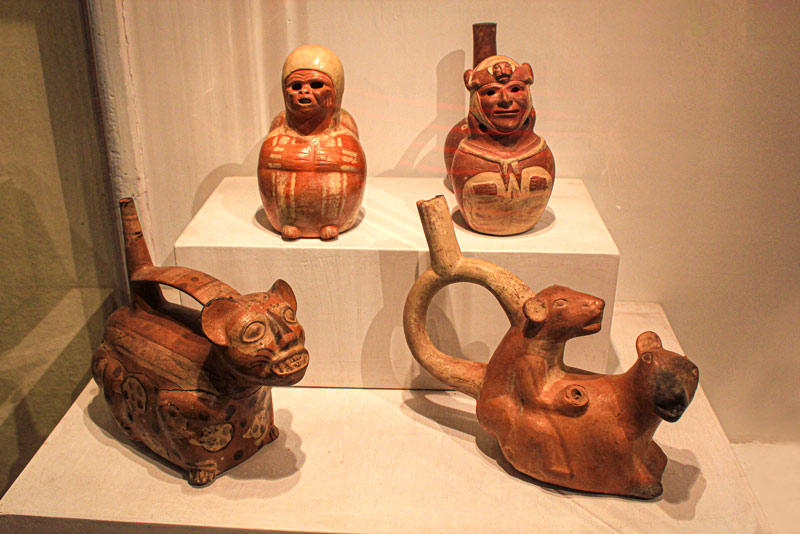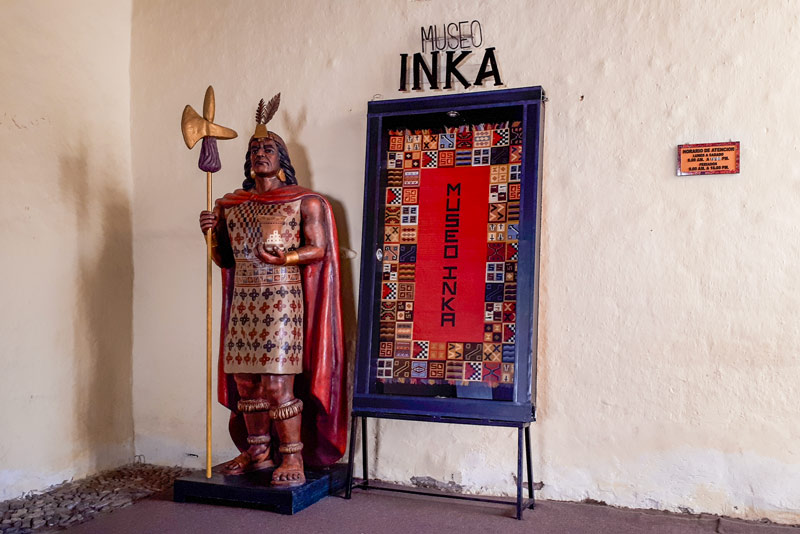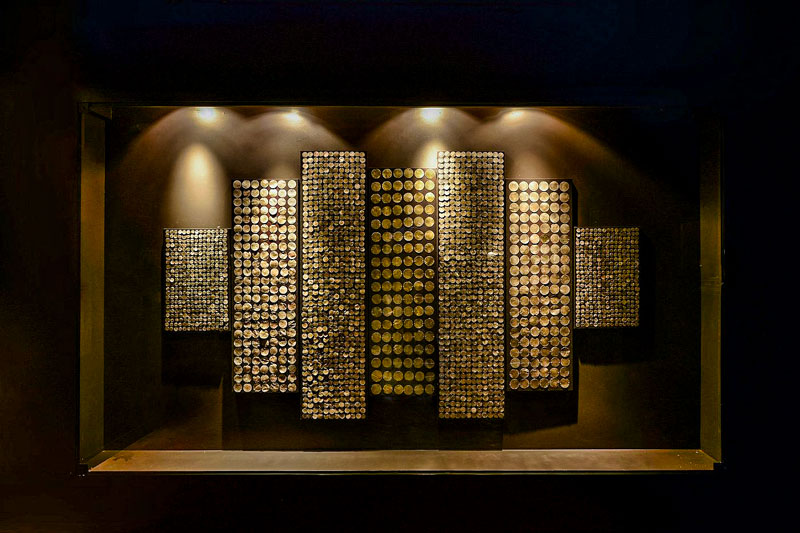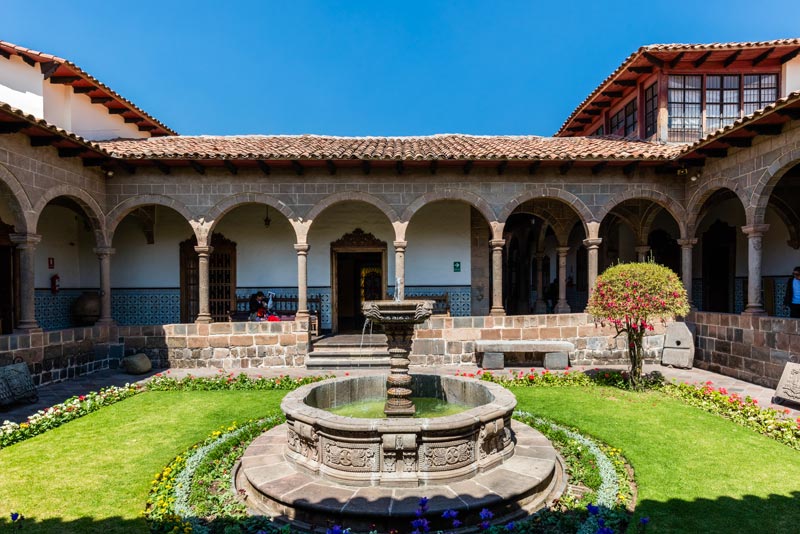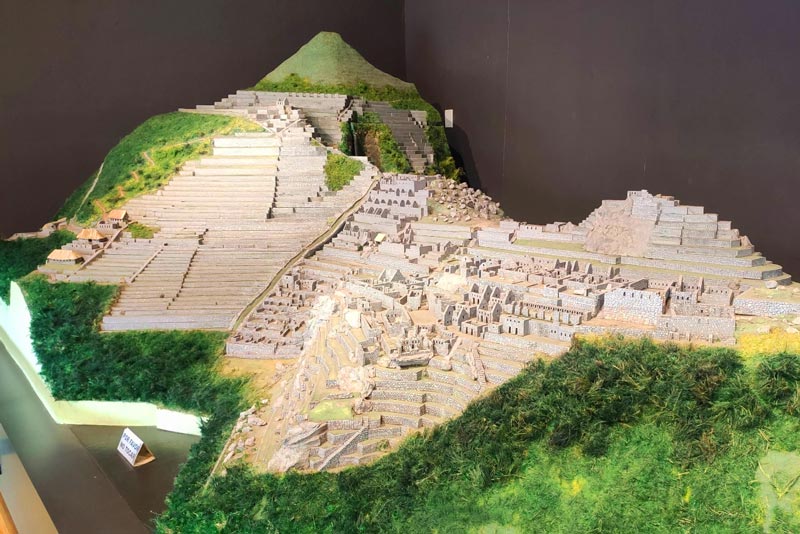The best museums in Cusco
The city of Cusco is a living museum; every street, every place we visit reveals an incredible perspective on a culture with much to tell. Alongside this culture, there are venues designed to reveal and teach us more about what Cusco once was, along with its historical and artistic legacy. In this article, we’ll tell you which are the best museums to visit in the city, each of which is ideal for learning more about its Andean, Incan, and colonial cultures.
- The historical legacy of Cusco
- The best museums in Cusco
- Inka Museum
- Museum of Pre-Columbian Art
- Qoricancha Site Museum
- Regional Museum
- Museum of Religious Art
- Casa Concha Museum
- Tips for visiting Cusco’s museums
- Frequently Asked Questions
The historical legacy of Cusco
The culture of Cusco is cemented by many stages, beginning with the pre-Inca and Inca cultures, which long before then had a great mastery of art, ceramics, agriculture, and cosmic rituals. During this period of flourishing, the Tahuantinsuyu empire was founded, which encompassed territories such as Peru, Argentina, Bolivia, Ecuador, Colombia, and Chile. Along with the Inca period, the main buildings that we can see today were built, such as Machu Picchu, Ollantaytambo, Pisac, and throughout the aforementioned territory.
Later, the Colonial period began with the Spanish invasion. Here, a cultural fusion of Christian and Andean religious beliefs took place , giving way to an artistic period known as “Andean Baroque,” which can be glimpsed today, as a prime example, in the city’s main churches.
Finally, the Republic era began, transforming the perception of Cusco’s identity. After so many ideological changes, a period of peace and tranquility emerged, enough to allow us to understand and identify with everything we’ve experienced in this territory, and which, ultimately, conceives us as part of its legacy.
| Stage | Approximate period | Main features | Legacy in Cusco |
|---|---|---|---|
| Pre-Inca | Before the 13th century | Various Andean cultures such as the Marcavalle and Chanapata with extensive knowledge of agriculture, ceramics, and rituals. | Archaeological remains, early pottery, evidence of early urban planning. |
| Inca | 13th Century – 1533 | Cusco was the capital of the Tahuantinsuyu, with advances in architecture, astronomy, agriculture and state organization. | Sacsayhuamán, Qoricancha, Tambomachay, Inca road network (Qhapaq Ñan), traditions and Andean worldview. |
| Colonial | 1533 – 1821 | After the conquest, Spanish culture prevailed, but Andean-Christian syncretism emerged. | Churches, Andean Baroque art, the Cusco School of painting, convents and viceregal architecture. |
| Republican | 1821 – present | Cusco joins the Republic of Peru. Nationalism and identity valorization develop. | Museums, universities, archaeological research, and the recovery of the Inca legacy. |
The best museums in Cusco
If you want to immerse yourself even more in Cusco’s culture, museums are ideal places to complement your experiences throughout this territory’s heritage. In this list, we’ll present the best options available to learn more about Cusco’s history, including the pre-Inca, Inca, colonial, and republican periods.
Inka Museum
Visiting a museum in Cusco isn’t just about browsing exhibition halls; it’s also about visiting the places that preserve these objects and art, which are a cultural and historical attraction in themselves. This is the case of the Inka Museum , located in the Casa del Almirante (Admiral’s House), featuring colonial-era architecture. From its façade and balconies to its main plaza, every corner offers a glimpse into the artistic legacy that predominates here.
The Inca Museum’s exhibition areas cover the pre-Inca and Inca periods, and also include sites that describe their subsistence techniques and activities. There are also rooms dedicated to displaying Cusco’s natural regions and what we can find in each one.
One of its main attractions is the Mallki Wasi room, which displays the context of an Inca-era tomb and how ancestors were worshipped, thus providing a deeper understanding of their culture and beliefs.
The Inka Museum is located a short walk from the Plaza de Armas and is open Monday through Friday from 9:15 a.m. to 4:00 p.m. and Saturday from 8:45 a.m. to 1:45 p.m. Tickets can be purchased at the on-site ticket office.
Museum of Pre-Columbian Art
Located in the Plazoleta Nazarenas, the Pre-Columbian Art Museum is located in the Casa Cabrera, a place that served as a school for the nobility during the Inca Empire and later, during the colonial era, became a convent. Its impressive architecture showcases both styles.
The Museum of Pre-Columbian Art displays approximately 403 Inca and pre-Columbian artifacts selected for their aesthetic value and symbolism in ten rooms on two floors. Most of these artifacts served a ritualistic function and were crafted from clay, stone, wood, seashells, and metals.
The Pre-Columbian Art Museum is open from 10:00 a.m. to 4:00 p.m., Monday through Saturday. Tickets can be purchased at the on-site box office.
Qoricancha Site Museum
Located on Avenida El Sol, about 5 minutes from the main square, the Qoricancha site museum showcases Inca history and how it evolved into the Tahuantinsuyu empire in five rooms.
In its exhibits, we’ll find models showing the chronological evolution of the territory and what it was like in ancient times. During the tour, we’ll also see ceramics, Andean textiles, and some artistic replicas from the pre-Inca and Inca periods.
Among its main attractions are mummies and old photographs of what the site looked like at the time of its excavation. It’s a small museum, but it’s steeped in mysticism, and the tour takes place through underground passages.
The Qoricancha Museum’s opening hours are Monday through Saturday, from 9:00 a.m. to 6:00 p.m., and Sundays, from 9:00 a.m. to 12:00 p.m. Admission is included with the Cusco tourist ticket, which allows you to visit many more sites throughout the city.
Cusco Tourist Ticket
Remember that you can visit some of the most important museums in the city of Cusco thanks to the Cusco Tourist Ticket. These are specifically grouped in Circuit 2, which allows you to visit five museums throughout the city, in addition to admission to the Qosqo Native Art Center and two archaeological sites in the South Valley. The Tourist Ticket is divided into three circuits, and each one allows you unique and different experiences visiting historical sites in the Cusco region. Additionally, you also have the option of purchasing the comprehensive ticket, which brings together all three circuits and gives you the opportunity to have a much more immersive experience on your tour.
Regional Museum
The building that houses the Regional Historical Museum dates back to the 16th century. This site was originally intended to house smaller palaces and mansions during the colonial period in Cusco. It was built on Inca terraces, which are still preserved and lend their façade even more charm.
The Regional Historical Museum is located in Regocijo Square. An important fact about the site is that it was the home of the Inca writer Garcilaso de la Vega, hence its name, the Garcilaso Museum.
Throughout the museum, you’ll find 13 rooms displaying archaeological and artistic artifacts from the pre-Hispanic, colonial, republican, and contemporary periods. Among its most significant collections are Inca pottery, a collection from the Marcavalle culture, microsculptures from Sacsayhuamán, collections of goldsmithing and metalwork, a collection from the Wari culture, and historical paintings.
The Regional Historical Museum is open Monday through Sunday, from 8:00 a.m. to 5:00 p.m. Admission is included with the Cusco tourist ticket, which allows you to visit many more sites throughout the city.
Museum of Religious Art
Located a few steps from the Plaza de Armas, and next to the Twelve-Cornered Stone, the Museum of Religious Art is located in the Archbishop’s Palace of Cusco. This place houses the largest and most complete collection of religious pictorial art dating from the colonial era. This period saw the rise of the so-called “Cusco School,” which developed between the 17th and 18th centuries.
The museum’s collection is divided into eight rooms, each composed of paintings and sculptures. Among the most notable are a Baroque altarpiece gilded with 22-karat gold leaf, as well as 12 paintings that make up the Corpus Christi room. Other notable works include the Zodiac series, the Sacristy, the Origins room, the Garden room, and the Liberator room.
The Religious Art Museum is open Monday through Saturday, from 8:00 a.m. to 6:00 p.m. Tickets can be purchased at the on-site box office.
Casa Concha Museum
Also known as the Machu Picchu Museum, the Casa Concha Museum dates back to the Inca era, when it was the site of Túpac Inca Yupanqui’s palace. The mansion was remodeled in the 18th century and is characterized by its double-width stone arches.
The Casa Concha Museum displays pieces brought from the Machu Picchu citadel during Hiram Bingham’s excavations in 1912, as well as artifacts discovered at the site. The collection includes more than 350 pieces of ceramics, stone objects, bones, textiles, and silver.
The objects we find here stand out for their historical and aesthetic value, helping us better understand the history of the Incas and the purpose of Machu Picchu. The Casa Concha Museum is open Monday through Saturday, from 9:00 a.m. to 5:00 p.m. Tickets can be purchased at the on-site ticket office.
Tips for visiting Cusco’s museums
To ensure a much better and more immersive experience at each of Cusco’s best museums, we’ll provide you with a series of tips and recommendations that will help you enjoy your visit without missing a single detail. Find them here.
- Most museums in Cusco can be visited with the Cusco Tourist Ticket, so by purchasing one you can save money and enjoy a much more comprehensive experience.
- Visiting museums during your first few days in Cusco is an ideal way to avoid altitude sickness and make your stay in the city even more enjoyable.
- Cusco’s main museums are located near the city center, so your tour of each one will be much easier and more entertaining.
- If you visit Cusco during the rainy season (November–March), be prepared for each of your trips with waterproof clothing or a rain poncho, as the weather can change at any time.
- When visiting Cusco during the dry season (April to October), we will find clearer and more colorful weather, although there are usually more visitors.
- For a more immersive travel experience, we recommend visiting each of Cusco’s best museums, so you can discover different perspectives on its culture, architecture, and history.
- Take advantage of your trip and calmly enjoy each of the landscapes you will find, the geography of Cusco will allow you to have moments of introspection and rest .
- To enhance your travel experience in Cusco, give thanks to Pachamama (Mother Earth) for every surprising moment along the way, just as they do in Andean culture.
- Remember that you can book various experiences and tours around Cusco with Boletomachu Picchu. Ask our advisors about all the options available.
Frequently Asked Questions
1) What is the most complete museum to learn about the history of Cusco?
The Inca Museum is one of the most comprehensive museums for understanding the historical development of Cusco, from the pre-Inca era to the colonial period.
2) Where can I see colonial-era art in Cusco?
The Museum of Religious Art is the ideal place to appreciate Cusco’s colonial art, especially the work of the Cusco School.
3) Which museums are included in the Cusco Tourist Ticket?
The Cusco Tourist Ticket includes the Qoricancha Site Museum, the Regional Historical Museum (Garcilaso), the Museum of Contemporary Art, the Museum of Popular Art, among other cultural centers and archaeological sites.
4) What is the best museum to learn about Machu Picchu?
The Casa Concha Museum houses a valuable collection of original pieces recovered from Machu Picchu, including ceramics, stone objects, and textiles.
5) Where can you see pre-Columbian art pieces in Cusco?
The Museum of Pre-Columbian Art, located in the Cabrera House, exhibits more than 400 pre-Incan and Incan pieces of ritual and aesthetic value.
6) What are the general hours of the museums in Cusco?
Most museums are open Monday through Saturday, between 9:00 a.m. and 5:00 p.m., although some, like the Regional Historical Museum, are also open on Sundays.
7) What is the best activity to do during the first few days of your trip to Cusco?
Visiting museums during your first few days in Cusco is ideal, as it allows you to acclimatize to the altitude without strenuous physical activity.
8) Are the museums close to the city center?
Yes, most of the recommended museums are located in Cusco’s historic center, just a few minutes’ walk from the Plaza de Armas, making them easy to explore in a short amount of time.
9) Can I visit all the museums in one day?
Although it’s possible to visit several museums in a single day, it’s best to spread them out over two or more days to better appreciate their contents.
10) What language do the exhibitions speak?
The exhibits are mostly in Spanish, but many museums include English translations on the main panels.
Advice from people who have been there
 By: Dean H.
By: Dean H.“Getting to know the art of Machu Picchu“
“Visiting the Casa Concha museum allowed me to better understand the history of Machu Picchu, each of the pieces on display are incredible, very beautiful and amazing.“
By Ticket Machu Picchu – Last updated, June 5, 2025
